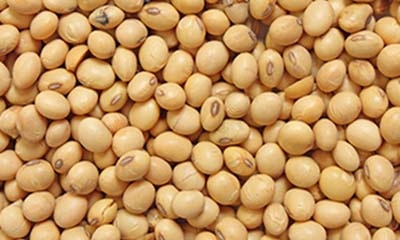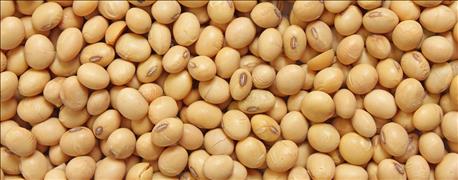
USDA on Tuesday made a larger-than-expected cut to U.S. soybean ending stocks for the current crop year and forecast lower-than-expected stocks for the 2016 crop as reductions in South American soybeans should increase demand for U.S. supplies.
The numbers sent corn and soybean prices higher in the Chicago markets, with soybeans briefly up more than 50 cents a bushel.
For soybeans, 2016/2017 ending stocks were at 305 million bushels, which was under most trade estimates. To arrive at that number USDA put production at 3.8 billion bushels versus 2015’s 3.929 billion and raised crushings to 1.915 billion and exports to 1.885 billion from 2015’s 1.880 billion and 1.74 billion, respectively.

Soybeans soar on very bullish 2016 stocks forecast. (Photo: keattikorn/Thinkstock)
“The government lowered its forecast of the 2015 soybean carryout in line with my own forecast due to stronger demand, but the real push comes next year, when supplies from South America will run out much faster than the previous year,” said Bryce Knorr, Farm Futures senior grain analyst. ”That will open the door for exports of soybeans and meal, leading to sharply higher demand that cuts carryout down to 305 million bushels. That’s 30 million more than I projected, even though USDA as expected used a larger yield estimate.”
USDA said limited soybean production gains are projected for the 2016/2017 South American harvest in early 2017.
“The big question for soybeans now is how many acres this will attract from corn, sorghum, cotton and maybe spring wheat. November futures aren’t at profitable price levels yet for the average grower, but they’re getting closer,” said Knorr.
Corn ending stocks for 2015/2016 were lowered to 1.803 billion bushels and 2016/2017’s were put at 2.153 billion, both of which were below most trade forecasts. For 2016, the harvest was forecast at 14.43 billion versus 2015’s 13.6 billion, feed use went to 5.55 billion from 2015’s 5.25 billion and exports to 1.9 billion from 1.725 billion.
USDA said lower expected prices and further expansion in animal numbers should boost corn use.
“The government used 168 bushels per acre yield with its 93.6 million planted acres for a huge 2016 crop above 14.4 billion bushels. With this rally in soybeans there’s no way all those acres will be planted, especially with cold, wet conditions continuing in the eastern Corn Belt,” said Knorr. “But corn growers will have to be patient waiting for rallies.”
U.S 2016 wheat production was put at 1.998 billion, higher than many trade estimates but down from last year’s 2.052 billion. Ending stocks for that crop went to 1.209 billion bushels versus the current year’s 978 million.
The reduction in the total wheat crop was linked to a smaller planted area, which should offset better yields. Exports are raised to 875 million from 2015’s 780 million, although these will still be limited by ample global supplies, it said.
“The world numbers are even more bearish for wheat, which is why the initial rally today began to fade,” said Knorr.
USDA put 2016 world wheat ending stocks at 257.34 million metric tons, up from 2015’s nearly 243 million.
In foreign markets, Argentina’s current soybean crop was cut to 56.5 million metric tons from 59 million, which was consistent with lowered estimates from private firms as excess rain and flooding hurt the crop. Brazil’s soybeans were cut to 99 million metric tons from 100 million and its corn to 81 million from 84 million. Those reductions also were expected as dry conditions hurt crops.


About the Author(s)
You May Also Like




